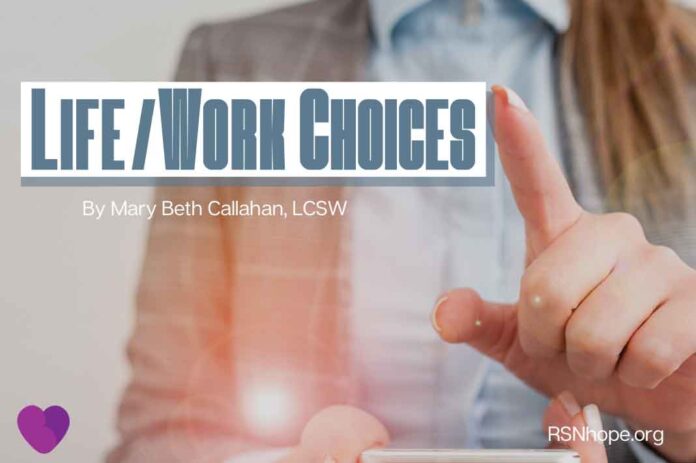To work or not to work? Is that the question?
Chronic kidney disease (CKD) and end-stage renal disease (ESRD) bring lots of peaks and valleys into one’s life. Fortunately, the Family Medical Leave Act (FMLA) not only protects family members. It also can protect your job when and if you must keep multiple doctor appointments or need to take off portions of a workday for dialysis. It also applies to if you need to take weeks off from work after a surgery, which might include a transplant.
An important step is to get short-term disability insurance if it is available through your employer. Sometimes short-term disability insurance is included in your benefit package, or sometimes it will be an added cost. Check to see if you can get it. Some people obtain it from a third party provider.
An illness could cause you to need more than just a few weeks off from work. Short-term disability usually lasts only three to six months. However, if you are not able to return to work by the end of the coverage period, you may qualify for Social Security Disability Insurance (SSDI) coverage based on not having earned income for five months since this five-month gap often sends people into bankruptcy. Medical evidence based on Social Security Administration (SSA) policy is still needed in order to claim any benefits.
Gaining employment and remaining employed have many good benefits. These include employer group health plans (EGHP), networking with peers, socialization, and keeping your mind and body active. Having a job to go
to can also help fight against anxiety, depression, and sleeplessness. It also helps chronic illness seem like a smaller portion of your life since you have other things to occupy your mind. And earning extra money over time increases what the Social Security Administration (SSA) will pay if you eventually need SSDI.
The SSA also provides work incentives to those who have started receiving SSDI or Supplemental Security Income (SSI). It not only requires a medical disability; eligibility takes into account other household income and assets. SSDI does not. Therefore, SSA work incentives are different. Additional information can be found in the Red Book on the SSA website (www.ssa.gov).
The SSA considers transplants “potentially disabling for 12 months.” Following the time period of 12 months post-transplant, the SSA will evaluate your records. If you have no other disabilities, you will no longer be considered disabled based on a transplant or due to ESRD. Medicare can continue benefits under ESRD for the remainder of three years, but Medicare premiums must be paid by the person receiving Medicare.
SSA Work Incentives for SSDI recipients are:
Trial Work Period (TWP)
The TWP allows you to test your ability to work for at least 9 months. During this time you will receive full SSDI benefits regardless of how high your earnings might be, as long as you report your work activity to SSA, and you still have a disabling impairment.
When does the TWP start? It starts when you begin working and performing “services.” In 2021, SSA considers a “service month” to be if your gross earnings are more than $940 a month, or if you work more than 80 hours in self-employment
in a month.
How long does the TWP last? The TWP continues until you accumulate 9 TWP service months (not necessarily consecutive) within a rolling 60-month period if this begins before SSA reviews your case.
Continuation of Medicare Coverage
Most people with disabilities who work continue to receive at least 93 consecutive months (9 years, 7 months) of Hospital Insurance (Part A); Supplemental Medical Insurance (Part B), if enrolled; and Prescription Drug coverage (Part D), if enrolled, after the 9-month Trial Work Period. You do not pay a premium for Part A. Although SSDI cash benefits may cease due to work, you have the assurance of continued health insurance. The 93 months start the month after the last month of
your TWP.
Substantial Gainful Employment
To be eligible for disability benefits, a person must be unable to engage in substantial gainful activity (SGA). A person who is earning more than a certain monthly amount (net of impairment-related work expenses) is ordinarily considered to be engaging in SGA. (SGA applies to people who might remain on dialysis or have another disease process.)
Amounts (2021):
$1,310 Non-Blind
$2,190 Blind
Bumps in the road are expected. Try to remain “work-ready,” which means exercising, volunteering, remembering your value, and advocating on your own behalf.
Resources
Social Security Website:
Home Dialysis Central Website
Watch Mary Beth Callahan’s Hope Week Presentation:
How to Work Through Stress and Anxiety
 Mary Beth Callahan, ACSW, LCSW, APHSW-C works with patients in all stages of chronic kidney disease (CKD). She has authored numerous articles and presented on a multitude of topics. She currently serves on the Board of the Society for Transplant Social Workers and is the past chair of the Council of Nephrology Social Workers. In 2015, she was the recipient of the NKF Council of Nephrology Social Workers Robert W. Whitlock Lifetime Achievement Award. Mary Beth continues to be an active contributor, member, and leader of numerous healthcare groups and committees related to the care of patients with CKD.
Mary Beth Callahan, ACSW, LCSW, APHSW-C works with patients in all stages of chronic kidney disease (CKD). She has authored numerous articles and presented on a multitude of topics. She currently serves on the Board of the Society for Transplant Social Workers and is the past chair of the Council of Nephrology Social Workers. In 2015, she was the recipient of the NKF Council of Nephrology Social Workers Robert W. Whitlock Lifetime Achievement Award. Mary Beth continues to be an active contributor, member, and leader of numerous healthcare groups and committees related to the care of patients with CKD.
Web ID 4042







